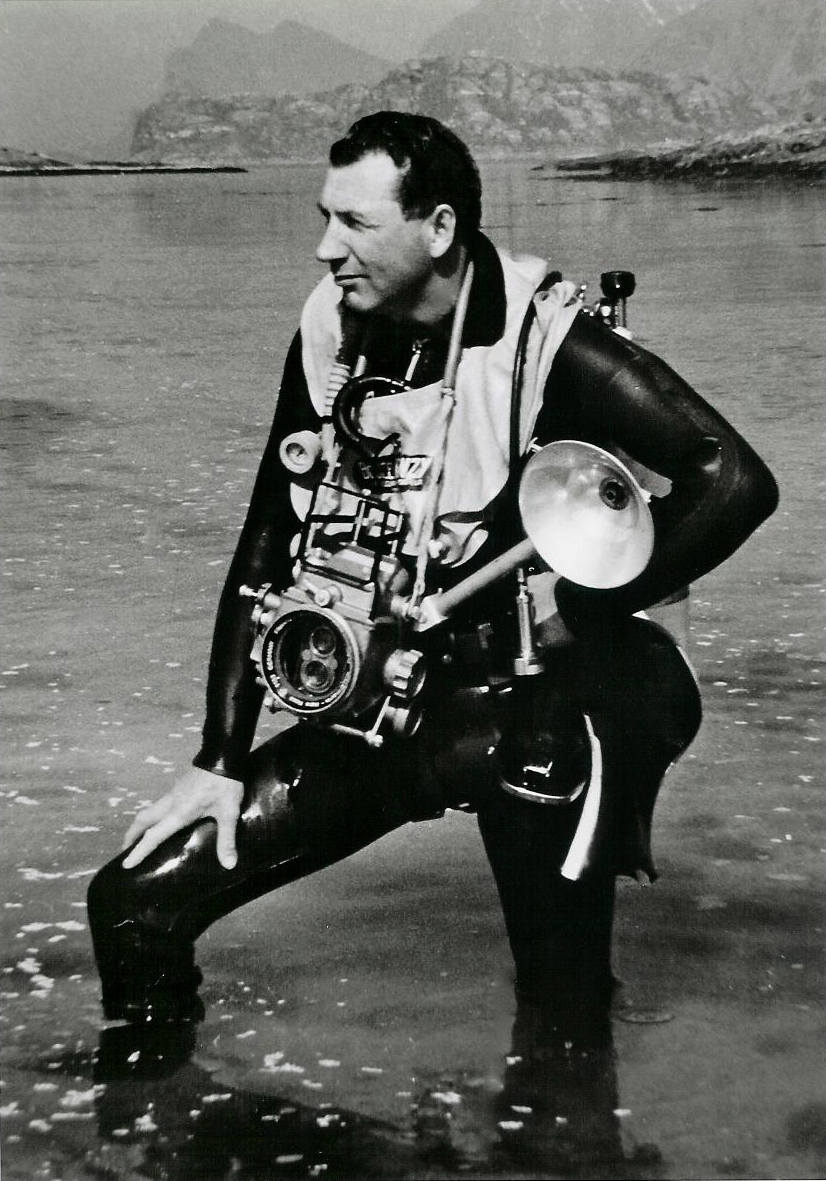|
Eduard Admetlla I Lázaro
Eduard Admetlla i Lázaro (10 January 1924 – 8 October 2019) was a Spanish scuba diving pioneer, underwater cameraman and photographer, designer of underwater camera housings, designer of a self-contained underwater breathing apparatus (scuba), tester of scuba diving gear for the Nemrod trade mark, writer, director of TV series, explorer and broadcaster. Biography Admetlla was born in Barcelona (Spain) on 10 January 1924. In 1948 at the age of 24, he started scuba diving. Initially he was an underwater fisherman and became a member of the Asociación de Pesca Submarina de Barcelona (APS) in Barcelona. He soon abandoned this activity as he came to the conclusion that being armed was not the way to go underwater. In 1954 he became a founding member of the Centro de Recuperación y de Investigaciones Submarinas (CRIS). Following that he became an underwater photographer and cameraman. He also invented underwater camera housings and was a test diver of scuba diving gear for the ... [...More Info...] [...Related Items...] OR: [Wikipedia] [Google] [Baidu] |
Barcelona
Barcelona ( , , ) is a city on the coast of northeastern Spain. It is the capital and largest city of the autonomous community of Catalonia, as well as the second most populous municipality of Spain. With a population of 1.6 million within city limits,Barcelona: Población por municipios y sexo – Instituto Nacional de Estadística. (National Statistics Institute) its urban area extends to numerous neighbouring municipalities within the Province of Barcelona and is home to around 4.8 million people, making it the fifth most populou ... [...More Info...] [...Related Items...] OR: [Wikipedia] [Google] [Baidu] |
Canary Islands
The Canary Islands (; es, Canarias, ), also known informally as the Canaries, are a Spanish autonomous community and archipelago in the Atlantic Ocean, in Macaronesia. At their closest point to the African mainland, they are west of Morocco. They are the southernmost of the autonomous communities of Spain. The islands have a population of 2.2 million people and they are the most populous special territory of the European Union. The seven main islands are (from largest to smallest in area) Tenerife, Fuerteventura, Gran Canaria, Lanzarote, La Palma, La Gomera, and El Hierro. The archipelago includes many smaller islands and islets, including La Graciosa, Alegranza, Isla de Lobos, Montaña Clara, Roque del Oeste, and Roque del Este. It also includes a number of rocks, including those of Salmor, Fasnia, Bonanza, Garachico, and Anaga. In ancient times, the island chain was often referred to as "the Fortunate Isles". The Canary Islands are the southernmost regio ... [...More Info...] [...Related Items...] OR: [Wikipedia] [Google] [Baidu] |
History Of Scuba Diving
The history of scuba diving is closely linked with the history of the equipment. By the turn of the twentieth century, two basic architectures for underwater breathing apparatus had been pioneered; open-circuit surface supplied equipment where the diver's exhaled gas is vented directly into the water, and closed-circuit breathing apparatus where the diver's carbon dioxide is filtered from the exhaled breathing gas, which is then recirculated, and more gas added to replenish the oxygen content. Closed circuit equipment was more easily adapted to scuba in the absence of reliable, portable, and economical high pressure gas storage vessels. By the mid-twentieth century, high pressure cylinders were available and two systems for scuba had emerged: open-circuit scuba where the diver's exhaled breath is vented directly into the water, and closed-circuit scuba where the carbon dioxide is removed from the diver's exhaled breath which has oxygen added and is recirculated. Oxygen rebreat ... [...More Info...] [...Related Items...] OR: [Wikipedia] [Google] [Baidu] |

